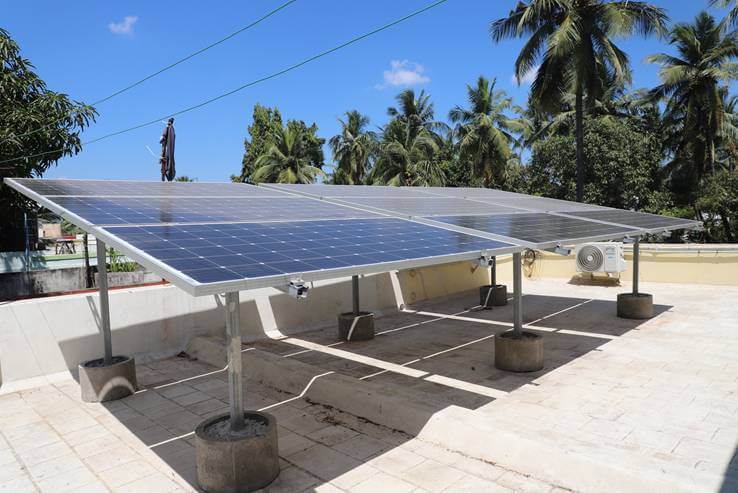
Photovoltaic modules are solar panels that generate electric energy from the photons and radiation of the sunlight. Their power generation expressed in kWh from peak kilowatts (kWp) is determined based on their composition, amorphous silicon, polycrystalline silicon, or monocrystalline silicon, their surface in m2, their efficiency, sunshine, and direction.
On these cells, which are next to a conductive plate, a metal grid is installed. These two parts allow the electric current generated by the cells during light exposure to be collected.
A translucent plate, commonly made of toughened glass, covers everything while allowing light to pass through. This is shock-protected in a frame that provides for reliable anchoring to a roof or the ground on an appropriate frame. Nothing should move, even in a heavy breeze.
Latest Technology in Residential Solar Industry in India
The bifacial solar panel is a dual face solar panel which has the ability to generate electricity from front or back side as well. It is most efficient option available in terms of performance to space ratio. As a result, the solar panel cells’ electrical connectors are at the rear. You can optimize power generation for optimal performance while reducing surface area with this technology. The bifacial solar panel is an excellent choice for producing the most amount of power while taking up the least amount of space and weighing the least amount of weight. The Shark bifacial front and back is the first bifacial solar panel introduced in India by none other than Loom Solar, the fastest growing solar network in India.
Criteria of choosing the best solar panel
When discussing or answering concerns regarding different types of solar panels, we should always begin by advising you to select the best suited panel for your installation rather than the cheapest. As a result, in this post, we’ll discuss the qualities and elements to consider while planning your solar installation. Investing in a solar panel is a wise decision. It’s a long-term investment because the installations are insured for up to 25 years! In order to select a high-quality panel, you must consider the following factors:
The basic elements
A solar panel is made up of photovoltaic cells and a frame. These allow direct current electricity to be generated from solar energy. Monocrystalline or polycrystalline silicon is used to make these cells.
Amount of power it can generate
The capacity of a solar panel to produce energy under optimum conditions is referred to as power. The quality of the device, the materials utilized, the surface on which it is used, the surroundings, and the circuit supplied are all factors that influence energy generation. As a result, a single square meter of installation may generate up to 150 watts. The majority of solar panels are 1.5 to 3 kWp in size.
The right solar inverter
Between the solar panels and the batteries is an electrical gadget called a solar inverter. Its job is to control the flow of energy from the solar panels to the batteries. It regulates both the intensity and the voltage they receive, ensuring that recharging takes place in the best possible circumstances and that the batteries are not harmed.
If you want to know more about How to choose best solar panel then you can visit the website of LoomSolar, where they have specialized articles centred about the best solar products for Indian residence.

Founder Dinis Guarda
IntelligentHQ Your New Business Network.
IntelligentHQ is a Business network and an expert source for finance, capital markets and intelligence for thousands of global business professionals, startups, and companies.
We exist at the point of intersection between technology, social media, finance and innovation.
IntelligentHQ leverages innovation and scale of social digital technology, analytics, news, and distribution to create an unparalleled, full digital medium and social business networks spectrum.
IntelligentHQ is working hard, to become a trusted, and indispensable source of business news and analytics, within financial services and its associated supply chains and ecosystems











